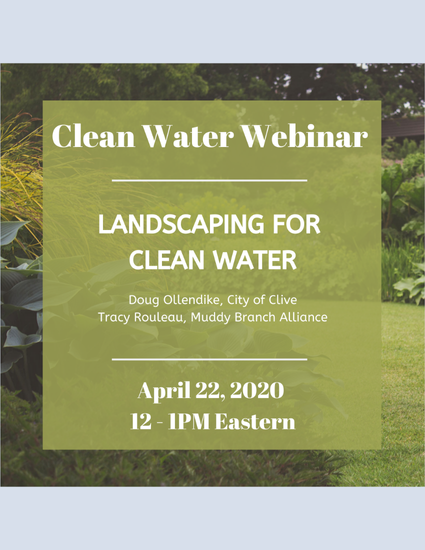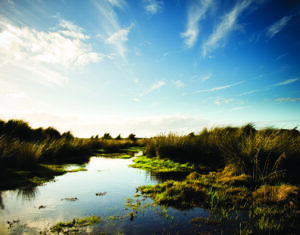Landscaping for Clean Water (Webinar)

Green spaces around our homes, neighborhoods, and cities provide beautiful spaces to recreate and homes for wildlife. But they can also have a huge influence on water quality, from fertilizer runoff to riparian buffers. What can individual residents, communities, and cities do to ensure their green spaces are helping keep our streams and creeks healthy? Join us for tips from Doug Ollendike, Community Development Director for the City of Clive, and Tracy Rouleau, President of the Muddy Branch Alliance.

 Your kit will include a bottle containing 25 nitrate test strips which you can use to test your water source(s) throughout the year. You’ll also receive postcards explaining how to use your nitrate test strips and how to share your Nitrate Watch results on the Clean Water Hub.
Your kit will include a bottle containing 25 nitrate test strips which you can use to test your water source(s) throughout the year. You’ll also receive postcards explaining how to use your nitrate test strips and how to share your Nitrate Watch results on the Clean Water Hub. Your kit will include four test strips so you can test your waterway throughout the season. You’ll also receive a chart to help you interpret your results and a postcard with instructions for completing a Salt Watch test and reporting your findings.
Your kit will include four test strips so you can test your waterway throughout the season. You’ll also receive a chart to help you interpret your results and a postcard with instructions for completing a Salt Watch test and reporting your findings.